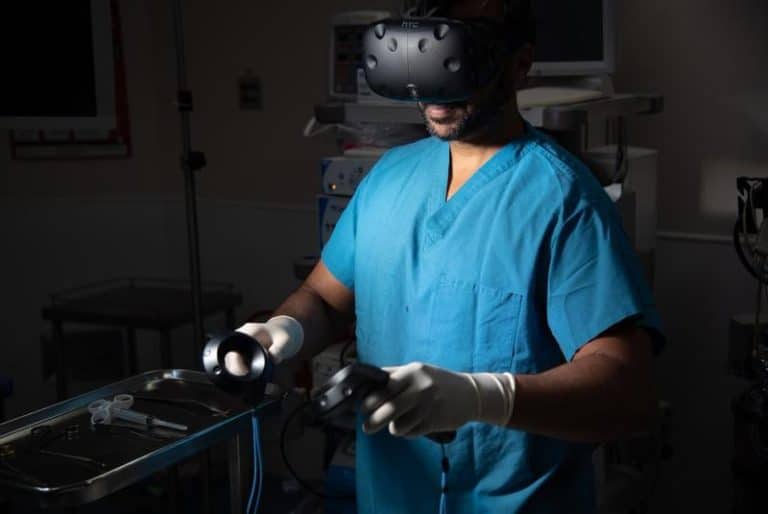Overview of Labial Hypertrophy
Labial hypertrophy is a medical condition that affects the labia minora, or inner lips of the vulva. It is characterized by an enlargement of the labia minora beyond what is considered normal. It can occur in both men and women, but it is more common in women. Labial hypertrophy can be caused by several factors, including genetics, hormones, and certain medical conditions. It can also be caused by frequent friction or irritation to the area.
Labial hypertrophy can cause discomfort and embarrassment for those affected. Symptoms may include pain during intercourse, difficulty wearing tight clothing, and difficulty urinating. In some cases, it may also lead to psychological distress due to its appearance. Treatment options for labial hypertrophy include both surgical and non-surgical methods. Surgery is typically used to reduce the size of the labia minora, while non-surgical treatments such as laser therapy and creams are often used to reduce inflammation and discomfort associated with the condition.
It is important for those affected by labial hypertrophy to seek treatment from a qualified health care professional in order to ensure that they receive the best possible care. Treatment should be tailored to each individual’s specific needs in order to ensure successful outcomes and minimize surgery/”>potential risks. By understanding the causes and symptoms of labial hypertrophy as well as available treatment options, individuals can make informed decisions about their care.
Anatomy of the Genitalia
The anatomy of the genitalia is composed of the clitoris, labia majora, and labia minora. Each of these components plays an important role in sexual pleasure and health.
Clitoris
The clitoris is a small organ located at the top of the vulva. It is made up of two parts: the glans clitoris, which contains thousands of nerve endings that provide pleasurable sensations when stimulated; and the body of the clitoris, which extends beneath the surface of the skin. The glans clitoris is typically covered by a hood-like fold of skin, known as the prepuce or hood. Stimulating this area can result in intense sexual pleasure for some women.
Labia Majora
The labia majora are two large folds of skin that extend from either side of the vulva. They are typically covered with pubic hair and contain sweat and sebaceous glands to provide lubrication during intercourse. The labia majora also provide protection to the more delicate structures inside them, such as the clitoris and urethra.
Labia Minora
The labia minora are two thin folds of skin located just inside the labia majora. They are usually pink in color and contain many nerve endings that make them sensitive to touch. The labia minora protect against infection by secreting mucus to keep bacteria out of the vagina. They also help regulate temperature within the vagina by providing insulation from external sources like clothing or air currents.
Treatment Options for Labial Hypertrophy
Labial hypertrophy is a condition in which the labia minora, or inner lips of the vagina, become enlarged. This can occur due to genetics, hormones, aging, childbirth, and other causes. Treatment options for labial hypertrophy can vary depending on the severity of the condition and personal preference.
Surgery
The most common surgical procedure used to treat labial hypertrophy is labiaplasty. During this procedure, excess tissue from the labia minora is removed and the edges are re-shaped. It typically takes one to two hours and can be performed under local anesthesia or general anesthesia. The recovery time depends on the individual but usually takes about two weeks before returning to normal activities. Other surgical procedures that may be recommended include laser resurfacing or liposuction of the area.
Non-Surgical Treatments
non-surgical treatments for labial hypertrophy may include topical medications such as corticosteroid creams or ointments to reduce inflammation and swelling of the area. Oral medications such as antihistamines or antibiotics may also be prescribed if there is an infection present. Alternative therapies such as herbal remedies or acupuncture may also be recommended.
In some cases, lifestyle changes such as avoiding tight clothing or using pads instead of tampons may help reduce symptoms associated with labial hypertrophy. Additionally, regular exercise and maintaining a healthy weight can help reduce discomfort in the area.
Benefits and Risks of Treatments
The benefits of treatment for labial hypertrophy include improved self-esteem and confidence, reduced discomfort during sexual activity, improved hygiene in the area, and improved appearance. The risks associated with treatment depend on the type of procedure being done but generally include scarring, pain, bleeding, infection, numbness in the area, recurrence of symptoms after treatment has been completed, and other complications related to anesthesia use.

Overall, it’s important to discuss all available treatment options with your doctor before deciding which one is right for you. Each option carries its own set of benefits and risks so it’s important to weigh them carefully before making a decision about how to proceed with treatment for labial hypertrophy.
Benefits and Risks of Treatments
When it comes to treating labial hypertrophy, there are both benefits and risks associated with each type of treatment. The most common treatments for labial hypertrophy are surgery and non-surgical treatments.
Surgery
Surgery is the most invasive option for treating labial hypertrophy but can be effective in reducing the size of enlarged labia. Benefits of surgical treatment include a permanent reduction in the size of the labia, improved appearance, and increased comfort. However, there are also risks associated with surgery such as infection, scarring, and nerve damage.
Non-Surgical Treatments
Non-surgical treatments such as laser therapy or steroid injections can also be used to reduce the size of enlarged labia. These treatments have fewer risks than surgery and can provide temporary relief from discomfort caused by enlarged labia. However, these treatments may not be as effective as surgery for some people and may need to be repeated periodically to maintain results.
Overall, it is important to weigh the benefits and risks of each treatment before deciding which one is right for you. It is important to discuss your options with a qualified healthcare provider so that you can make an informed decision about which treatment is best for you.
Effective treatments available for labial hypertrophy, including surgical and non-surgical options, with varying risks and benefits.
Conclusion
Labial hypertrophy is a common condition that affects many women. It can cause physical discomfort and aesthetic concerns, leading to a decrease in self-confidence. Fortunately, there are several treatment options available for labial hypertrophy, including both surgical and non-surgical treatments. Surgery is the most effective option but carries the highest risk of complications. Non-surgical treatments offer fewer risks but may not be as effective as surgery.
It is important for women considering treatment for labial hypertrophy to discuss their options with their doctor and weigh the benefits and risks of each option before deciding which one is best for them. With the right treatment plan, labial hypertrophy can be managed successfully and help improve self-confidence.





